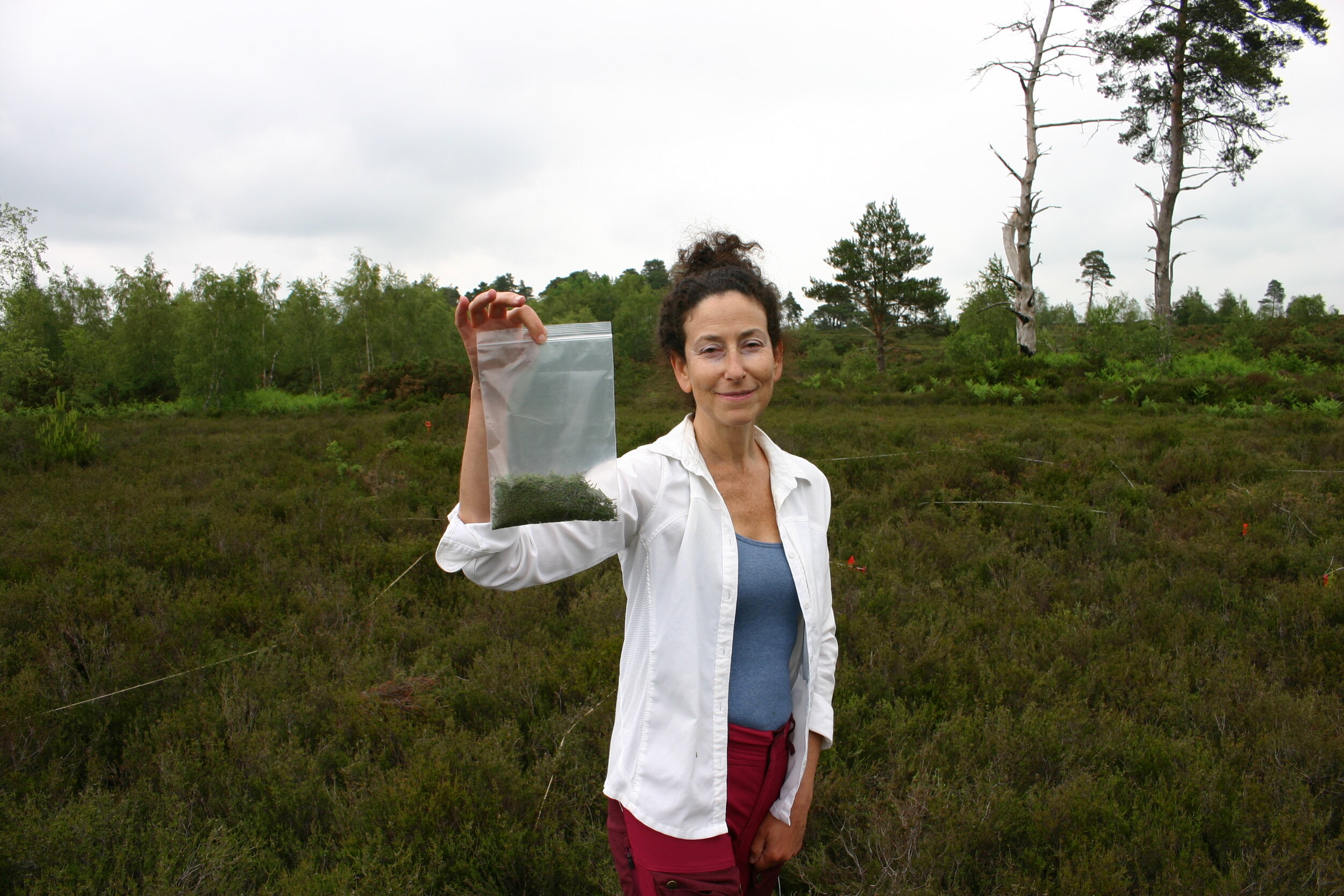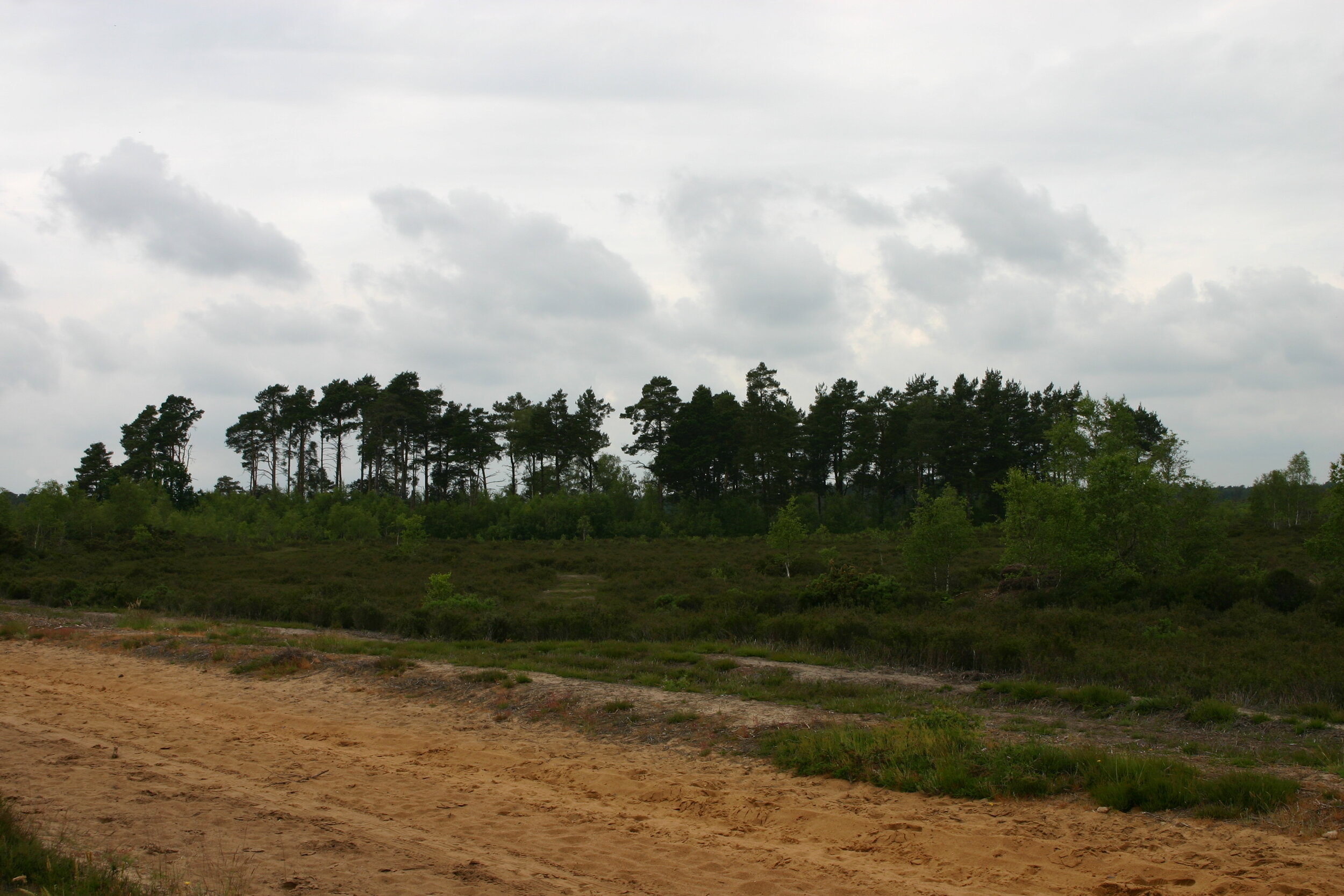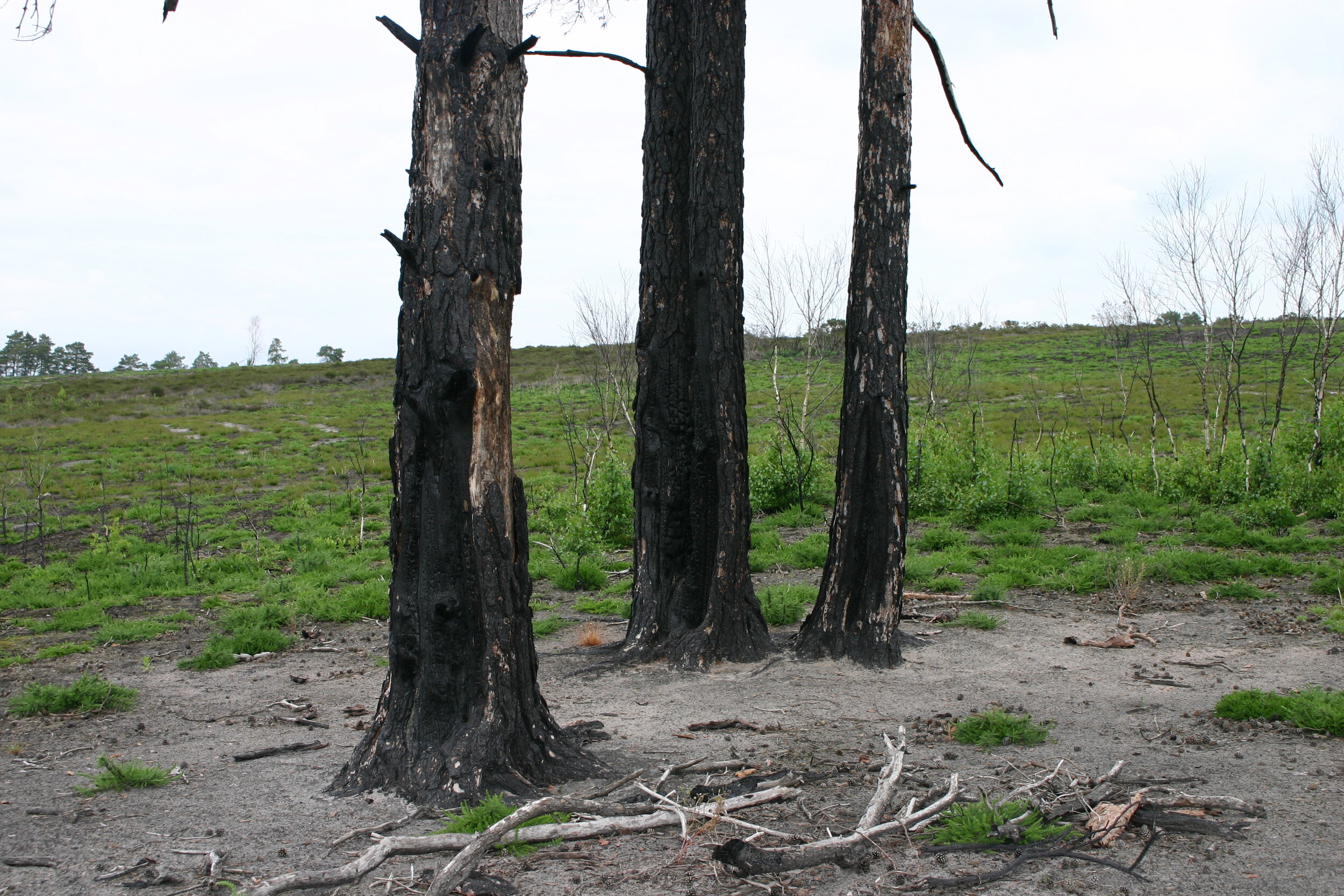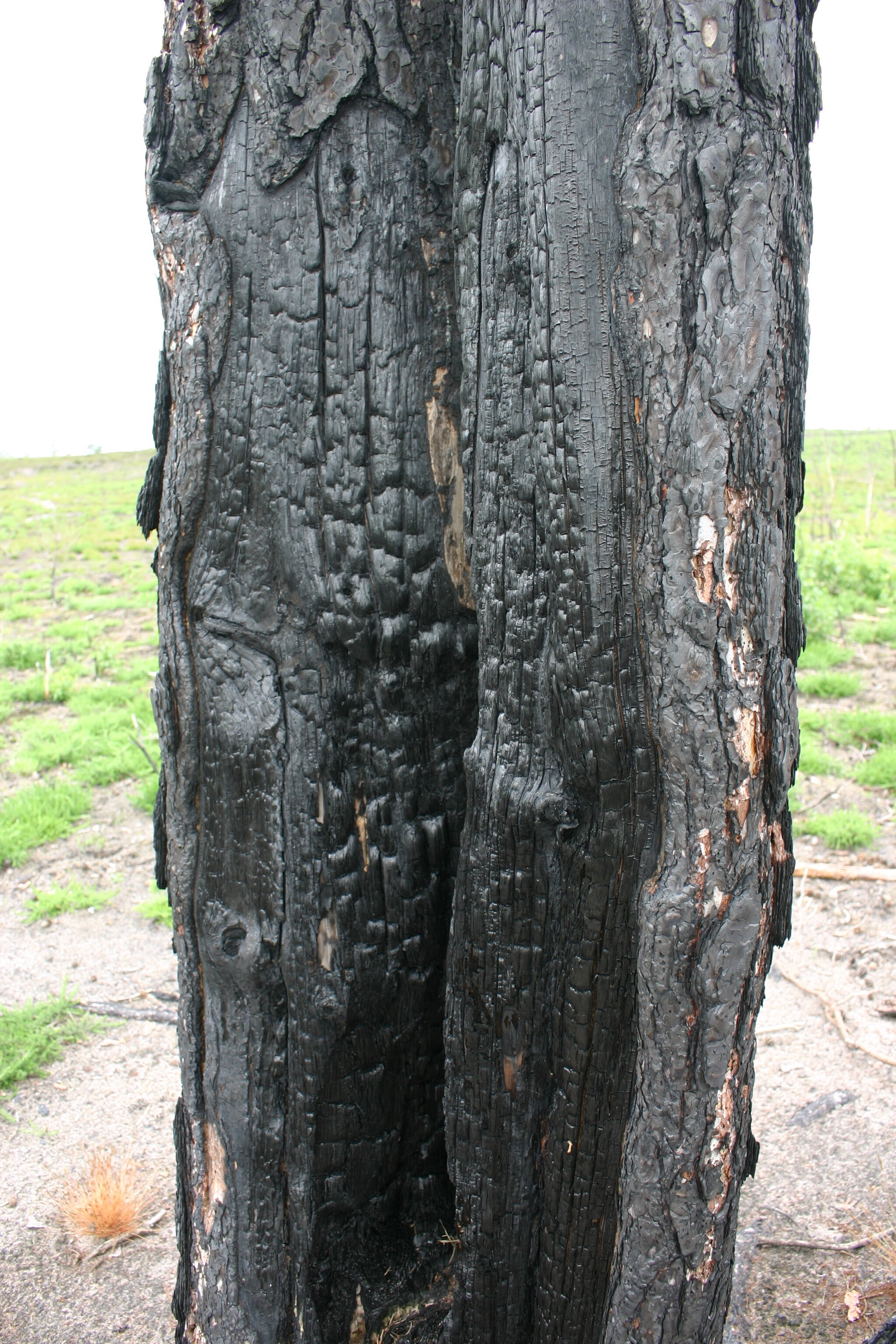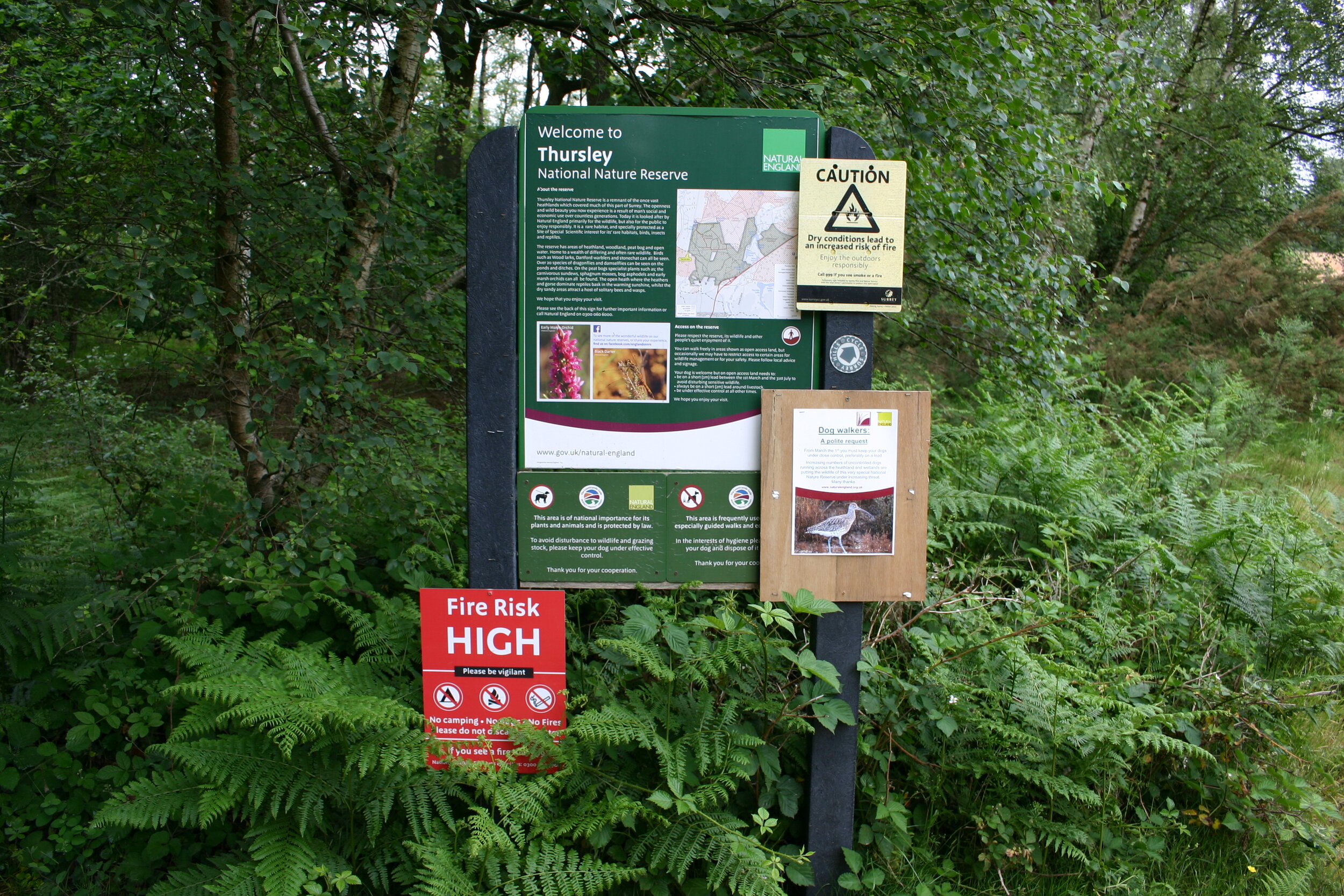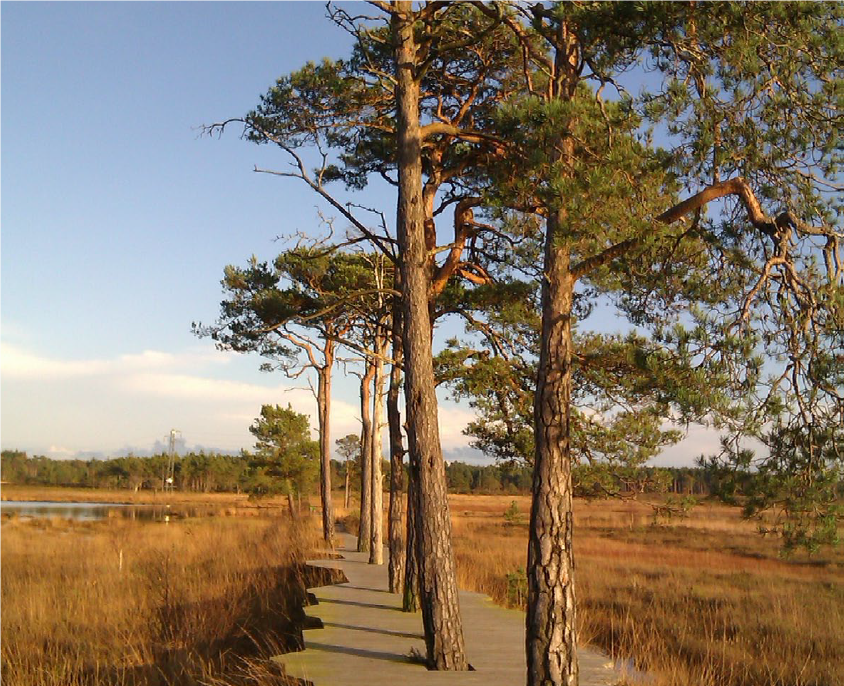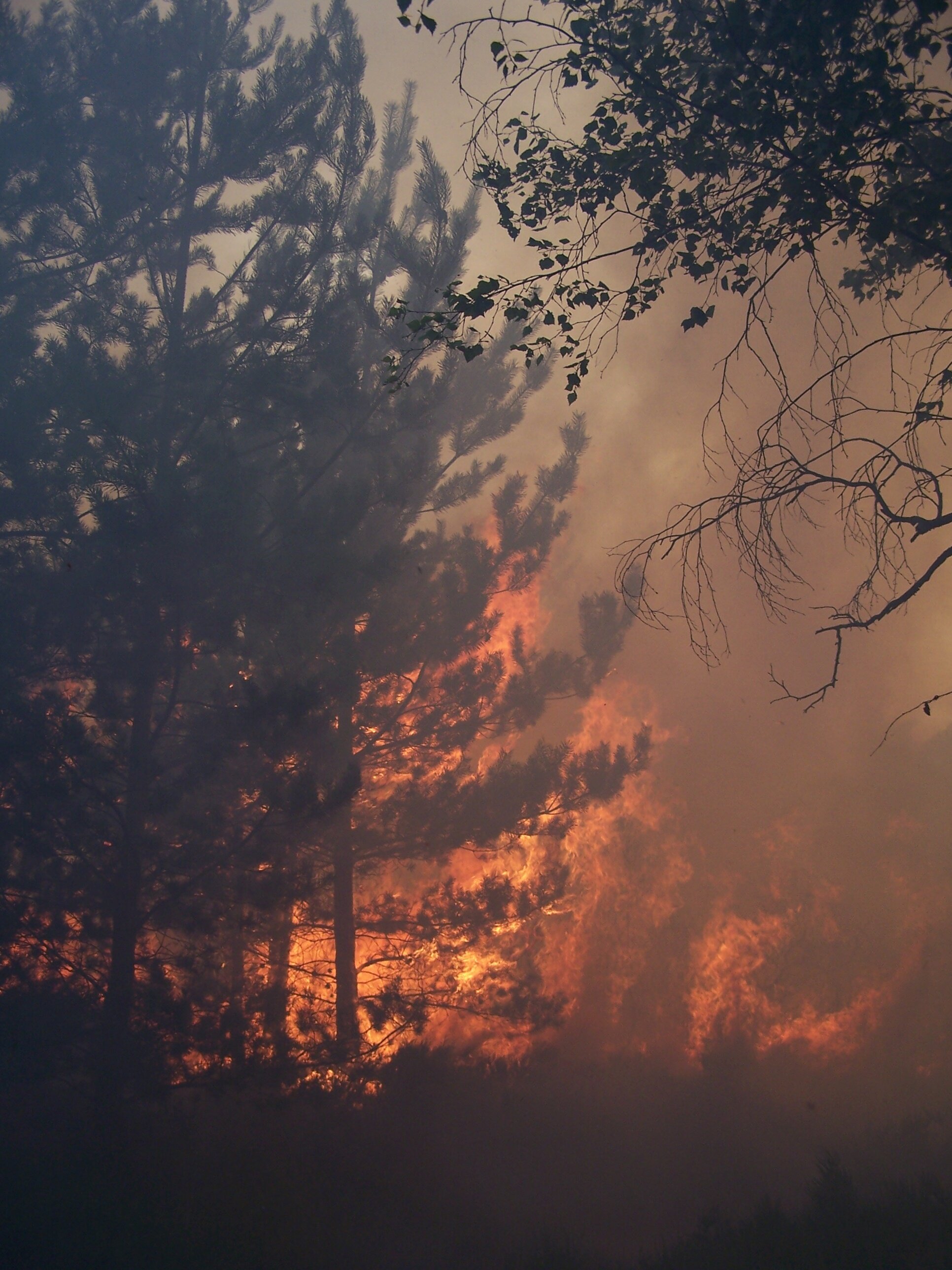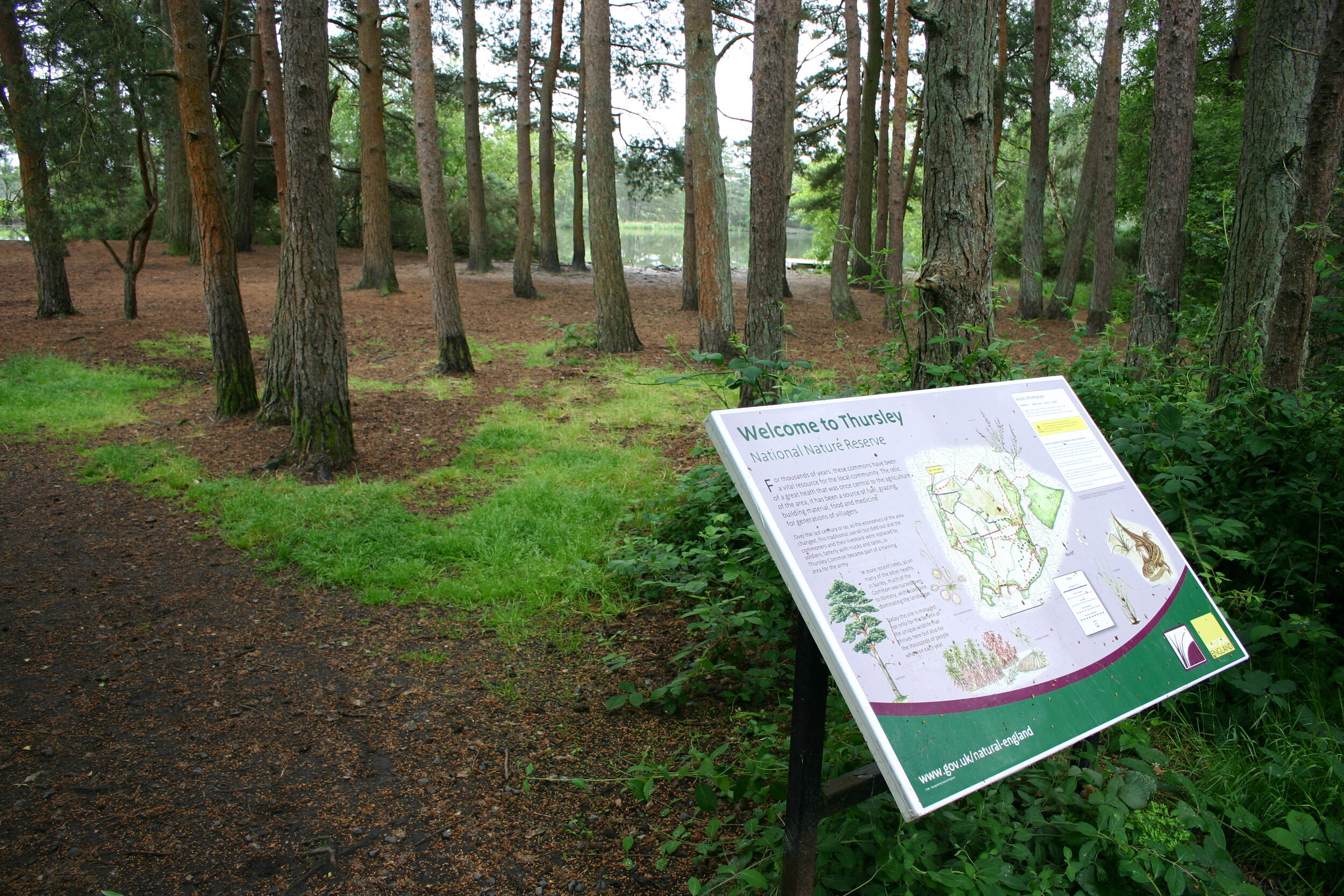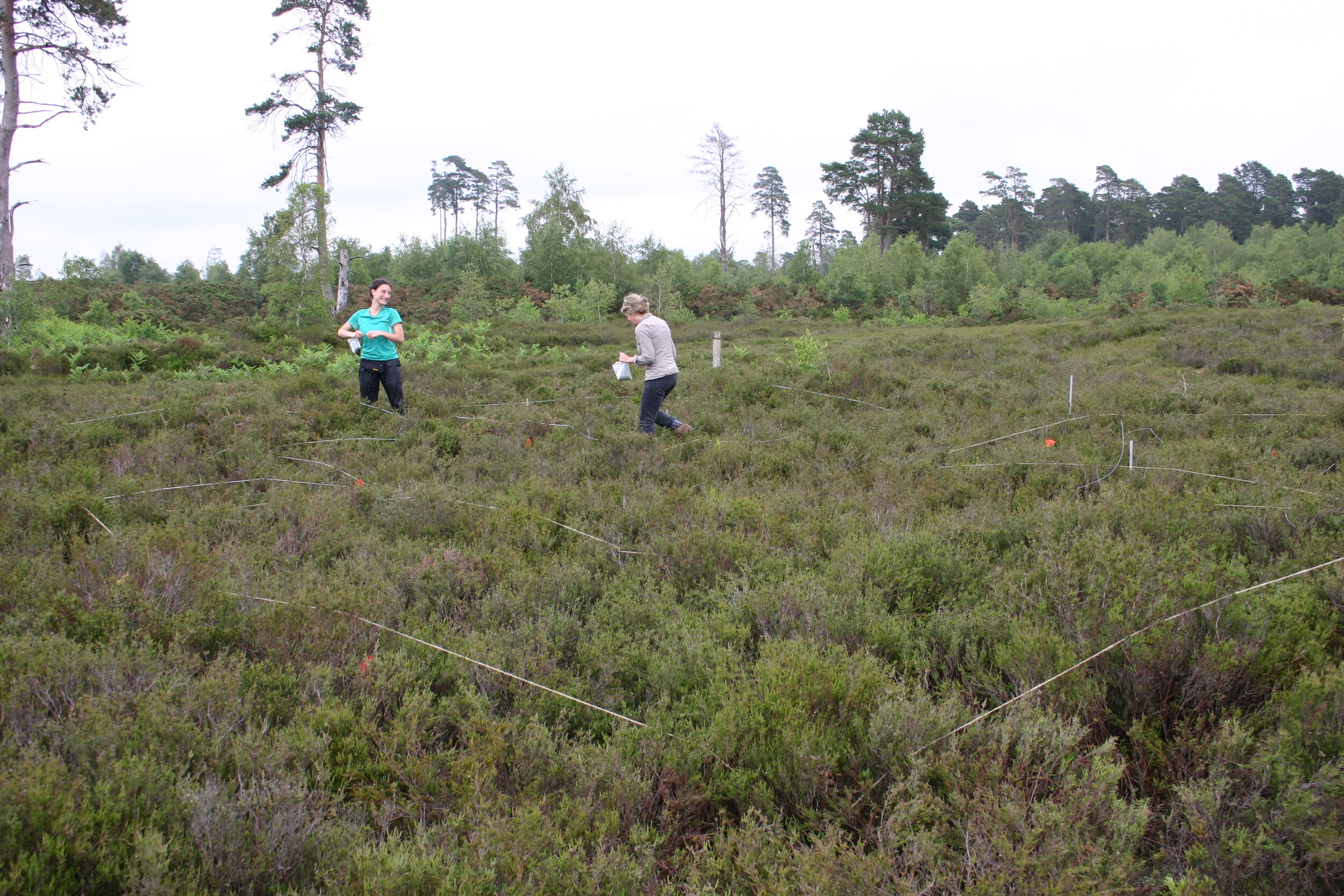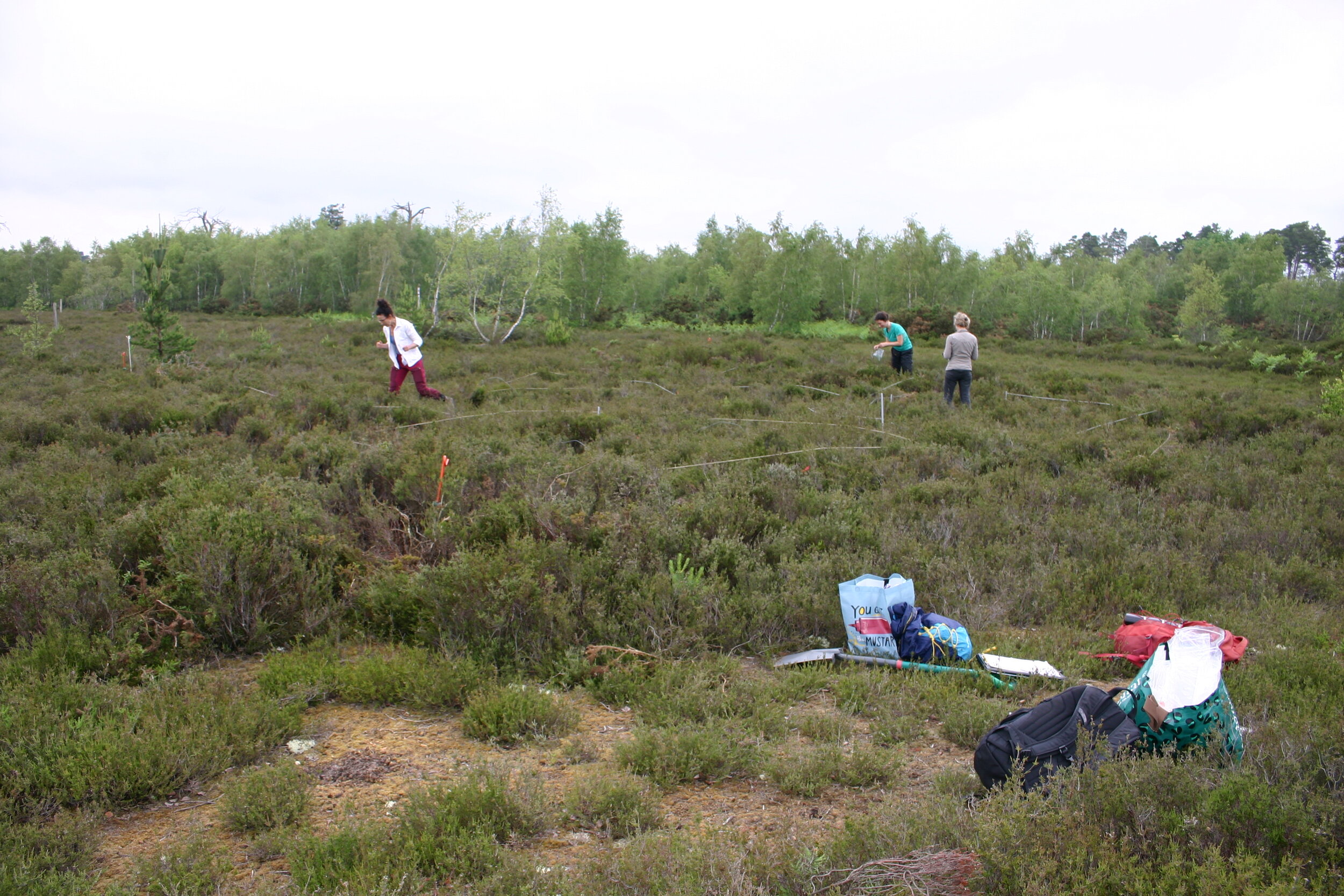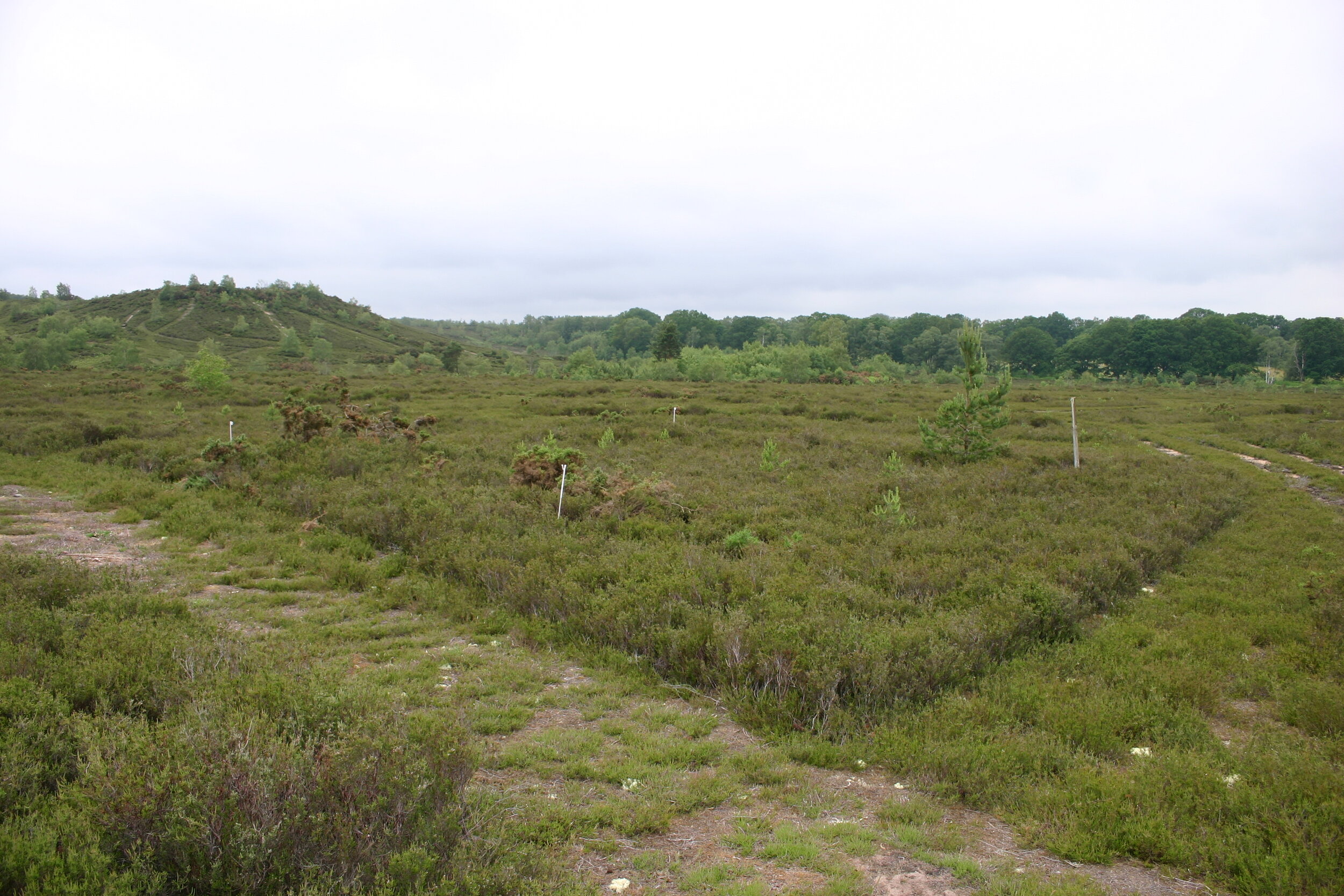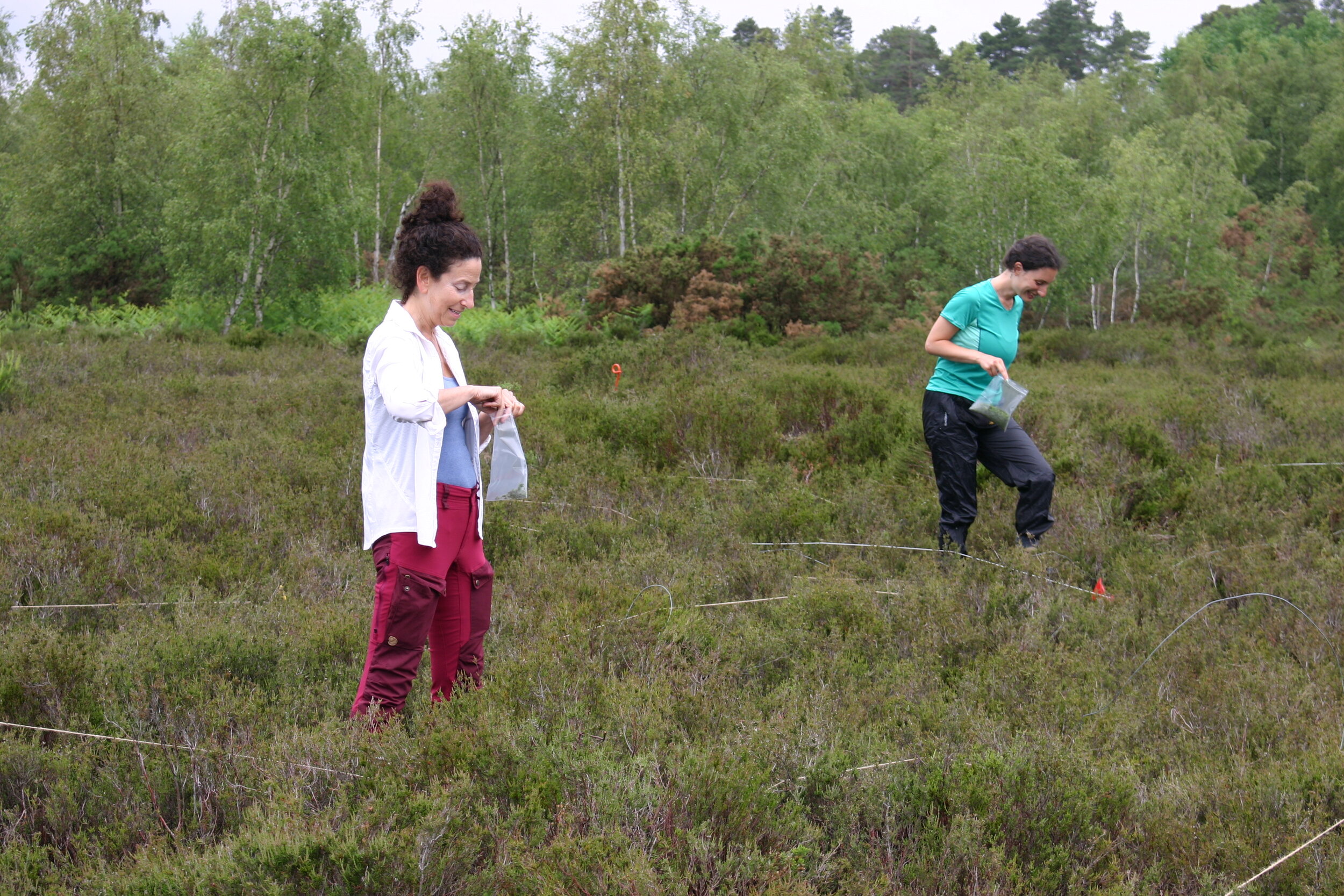Background
Thursley Common is a National Nature Reserve and Site of Special Scientific Interest owned by Natural England. It is a lowland heath habitat located south of Guildford in Surrey. Atmospheric nitrogen deposition is among the top three threats to biodiversity and it is estimated that by 2050 global N deposition will have almost doubled, relative to the 1990s. The experiments at Thursley Common were designed to investigate the effects of elevated nitrogen deposition on the structure, diversity and function of nutrient-poor lowland heath.
Initiated in 1989 and running until 1996, the first experiment investigated the responses of heather (Calluna) to differing levels of nitrogen addition. Nitrogen treatments ceased in 1996 and the experiment entered a post-treatment recovery phase, during which time plots were monitored.
A second experiment was started in 1998, to investigate plant community and ecosystem responses to nitrogen addition in combination with four contrasting ‘management’ treatments - low/high-intensity mowing and low/high-intensity burning. Following a wildfire in 2006, half the plots ceased to receive N additions, whilst the other half continued to receive N inputs on a monthly basis until the end of 2012.
Plots are still marked and the site remains available for new research. The site was one of several operating under the UKREATE umbrella project formerly funded by the Department for Environment Food and Rural Affairs (Defra) and the Natural Environment Research Council (NERC).
Design and Treatments
EXPERIMENT 1
Four replicate blocks, each comprising four plots (4m x 4m) with the following randomly allocated treatments:
1) Control - receiving artificial rain only
2) Low N - 7.7kg/ha/yr
3) High N - 15.4kg/ha/yr
4) Alternating N - receiving either the low or the high N treatment in alternate years
Artificial rain and N additions were applied fortnightly from 1998 to 2006.
EXPERIMENT 2
Four replicate blocks, each comprising four plots (4m x 4m) with two receiving artificial rain (control) and two receiving N addition at 30kg/ha/yr. Each plot was divided into four sub-plots which received one of the following management treatments:
1) Low-intensity mow
2) High-intensity mow
3) Low-temperature burn
4) High-temperature (simulated wildfire) burn
Management treatments were applied only once, in 1998, but all plots received continuous control/nitrogen additions from 1998 to 2006. From 2006 onwards, half the plots (one set per block) received no further N inputs (in “recovery”) whilst the other half (one set per block) continued to receive N inputs until the end of 2012. No further experimental N inputs have occurred since this time.
Vegetation and Ecosystem Parameters Monitored
Calluna growth and chemistry;
litter production and decomposition;
shoot sensitivity to frost and insect herbivory (by the heather beetle Lochmaea suturalis);
drought damage;
lichen community composition;
soil nutrient availability & cycling;
plant and soil carbon & nitrogen stocks;
microbial community composition.
Results and Conclusions
The initial experiment (1989-1996) revealed that greater than two-thirds of the applied nitrogen accumulated in the litter and soil and led to increased microbial populations and higher rates of conversion of nitrogen to soluble inorganic forms. Results have been key to modelling the impact of nitrogen deposition on heathland ecosystems and contributed to revision of the critical loads of nitrogen for lowland dry heaths at the European level.
Post-treatment monitoring of ecosystem recovery revealed that, eight years after nitrogen treatment ceased, its effects were still measurable in terms of reduced resistance of heather to drought, increased canopy height and a persistent increase in soil microbial activity.
The second experiment revealed big differences in the amount of stored (plant and soil) nitrogen removed from the plots under the contrasting management regimes. However, despite the characteristic stimulation of Calluna growth and accumulation of soil N in response to N addition treatments, interactions between N addition and management type did not persist beyond the first few years. Large positive effects of N addition on Calluna growth and flowering, and negative effects on the abundance and diversity of the lower plant community, were apparent in most years. There was also evidence that climatic conditions (especially rainfall) modulate the magnitude of nitrogen impacts over the decadal scale.
Future Use of Thursley Common Plots
The plots at Thursley Common remain accessible and open for new research use with the permission of the land owner Natural England (NE). If you are interested in using this site for new research, please contact James Giles at NE in the first instance.
Research Updates
-
The plots at Thursley Common will be used for the Air Pollution Recovery Indicators project.



